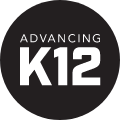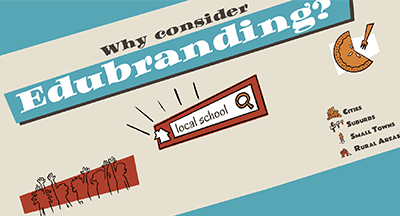
It’s not my problem.
How many times have we heard those words uttered in prime time dramas, boardroom reenactments, and secret meetings in mystery novels? There is almost no positive context in which the phrase can present itself, and it certainly has no place in the world of education, where the future of our children is at stake.
My work brings me into daily contact with educational leaders – from the directors of private and charter schools to the administrators of public school districts – and I make it a point to take note of the challenges they face. I do this not just because it’s my job to find a solution, but also because my role as a parent of four gives me a vested interest in the trends and issues that are shaping my children’s education.
There are few conversations that ignite these dual passions in me as much as college readiness. I’m heartened that so many of the administrators I’ve spoken to in recent years have taken an interest in the progress and success of their students long after graduation.
I am not blind to the fact that competition plays a big role here; success stories and college statistics can help enrollment numbers, to be sure, but I sense a more altruistic and compassionate motivation behind this surge. I’ve walked out of many meetings with the sense that the majority of individuals tasked with leading our school systems truly care about every student who walks through their doors.
College Readiness by the Numbers
But first, let’s look at the problem. To do that, we need only glance at the numbers, courtesy of the National Center for Education Statistics:41% of undergraduates pursuing a bachelor’s degree have still failed to attain that degree six years after enrolling.
The average annual cost of attendance at a public university was $17,474 in 2012-13.
More than 48% of bachelor’s degree students in a STEM field either change to a non-STEM major or leave college without a degree. That number rises to 69% for those seeking an associate’s degree.
Of course, there are a number of factors in play here, not all of which can be addressed in high school (or earlier). But one thing is certain: K-12 educators can do plenty to make sure their students are prepared for what comes next.
The Technology Gap
Anyone who has worked in edtech as long as I have can attest to the fact that the market is not always quick to adapt to outside pressures. It’s hard enough to keep a school district running, let alone change your practices on the fly in pursuit of new objectives.One of the common points of frustration today is a lack of systems support for college and career planning initiatives. Many student information and learning management systems are designed specifically to help teachers and administrators move their students through graduation, with little attention paid to what comes after. So what is the answer?
The solution starts with the students themselves. There are an awful lot of ambitious young men and women out there, but guidance counselors and resources are stretched so thin in the majority of schools that college prep often has to take a back seat to testing, admissions, and financial aid.
Students are almost universally using some kind of a portal to track their grades – imagine what a difference it might make if they (and their parents) could also track their longer-term goals and see how their K-12 education fits into the bigger picture. Course suggestions based on a chosen career path and transparency into customized graduation requirements are just two examples of how the existing technical resource of a student portal can be repurposed to support higher-ed goals.
A number of the schools and districts I’ve worked with have also adopted the traditional college method of “arena scheduling,” wherein students can sit down with their parents and select their courses for the upcoming year on a first-come, first-served basis based on their selected area of study. When preparing students for college, there’s nothing quite so impactful as recreating the college experience at a fundamental level.
Get the Community Involved
Technology is just one part of the puzzle. To combat the staggering number of undeclared majors among those entering an undergraduate program (80% by most estimates), K-12 institutions are turning to their community to expand learning beyond the classroom walls.Job shadowing, workplace tours, and even internships are becoming more popular every year. I was thrilled to hear about local junior high students paying a visit to Skyward’s corporate office during this school year to learn about coding and working in a high tech field. This is a step in the right direction.
But why stop there? I’ve heard administrators talk about the steps they’re taking to involve local businesses and higher education institutions at an even deeper level by inviting representatives from these groups to sit down at the table and provide input on everything from course offerings to curriculum. Ultimately, we all want the same thing – a brighter future for the children in our community. We’re that much stronger when we’re working together.
So, the question remains – is college success a K-12 problem? The answer might not be straightforward, but if there’s one thing I’ve learned, it’s that K-12 leaders are treating it like it is, and that’s all any parent can ask for.
WHAT'S NEXT FOR YOUR EDTECH? The right combo of tools & support retains staff and serves students better. We'd love to help. Visit skyward.com/get-started to learn more.

|
Advancing K12 Staff Edtech Thought Leaders |




